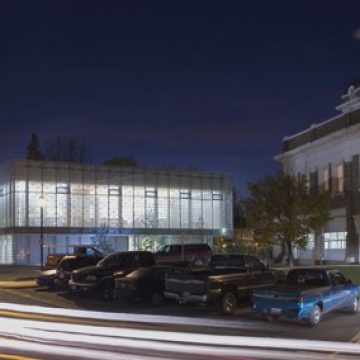By today’s standards, the consumer eco-sustainability movement of the 90s — aptly captured by the mantra, “Reduce, Reuse, Recycle!” — had relatively unambitious and short-sighted targets: dispose of plastic bottles responsibly, flush your toilet less frequently, wear an extra sweater in lieu of cranking up the heat. Today’s eco-sustainability movement has added a few more terms to its credo — “Revalue, Repurpose, Reclaim!” — which signify a greatly expanded philosophy and grown-up goals.
Eco-sustainability is now a major factor in decisions about construction, restoration and use of buildings, public spaces, and whole communities. One of the movement’s new emphases is on the repurposing of materials and buildings, and the ambitious reclamation of industrial sites and abandoned spaces. Projects like New York City’s High Line (a public park built along a historic freight rail line elevated above the streets on Manhattan’s West Side) and Toronto’s Evergreen Brick Works (a community park, market and environmental centre built on the site of a deteriorating brick factory and quarry in the Don Valley) are some of the best examples of cities’ willingness to look backward as they look forward in their commitment to applying eco-sustainability principles to whole neighbourhoods.
The move towards eco-sustainability has also created new creative opportunities in architecture and design, and spawned its own aesthetic. The Harbourfront Centre’s Summer Architecture Exhibitions 2012 presentation BORN AGAIN: The Repurposed City takes a look at this new aesthetic, and the way in which the urban architect has become “a socially responsive renovator,” interpreting urban buildings and spaces as reusable resources.
BORN AGAIN presents the sustainable architecture visions of three of Toronto’s leading architecture firms — DTAH, Kongats Architects and unit a architecture inc. — as each installation explores the eco-sustainability aesthetic from a different angle. DTAH’s Buildings, Streets, Neighbourhoods looks at the ways in which the City of Toronto can reduce construction material extraction and waste through the reuse of existing buildings, and the ways in which street redesign and the introduction of urban agriculture can reduce carbon emissions from automobiles and adverse health effects from our largely sedentary lifestyles.
Unit a architecture inc.’s Lost and Found explores at the process of structural regeneration by referencing the history of Toronto’s harbour, transforming the gallery space using an abandoned by-product of industry: the wooden shipping pallet.
Kongats Architecture’s Regenerate taps into the boundary between a renovation and a restoration of a particular space, and the ways in which newer architectural and aesthetic practices can become a part of a building’s living history. Each week, the installation space will be rotated 90 degrees to expose a different face of the installation interior.
Finally, as a major nod to the eco movement’s emphasis on the after-life of waste material, BORN AGAIN also showcases artist Gareth Lichty’s latest sculpture, Tangle — an oversized project comprised, appropriately, of long continuous strands of cut orange construction fencing.
What: BORN AGAIN: The Repurposed City
When: July 20 – September 16, 2012
Where: Harbourfront Centre, The Architecture Gallery
Details: harbourfrontcentre.com


